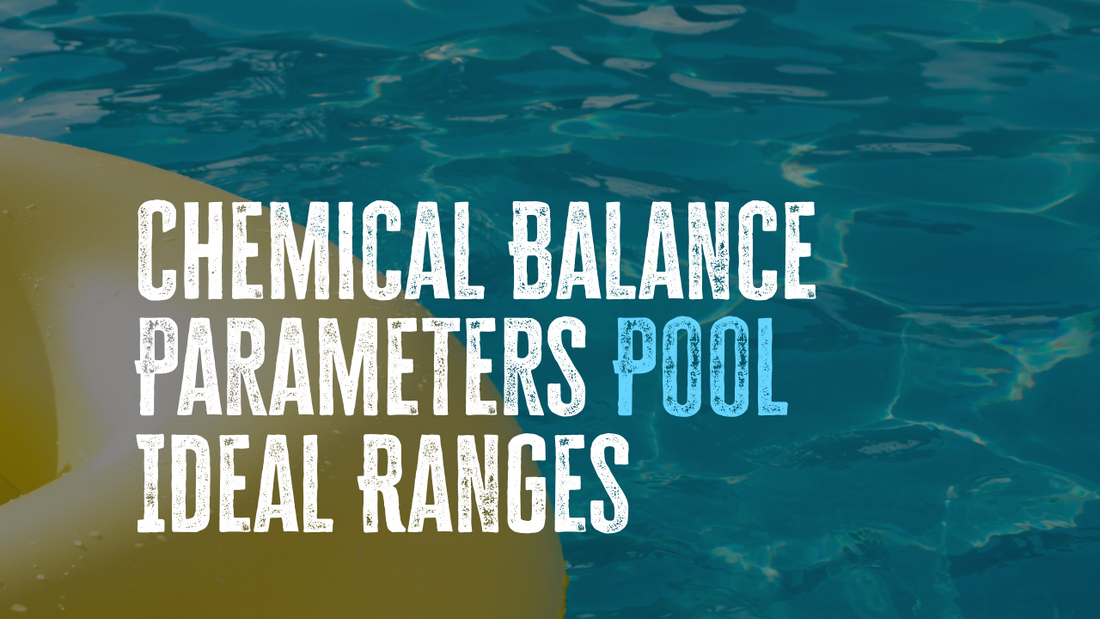
Pool Chemical Balance Parameters and Ideal Ranges
Share
How much chemicals should I put into my pool? What are the right chemicals? This guide offers pool chemical parameters and ideal ranges.
The following table outlines the essential pool chemical parameters and their recommended ranges for optimal pool maintenance:
Parameter Ideal Range Notes
| pH Level | 7.2 - 7.8 | Critical for sanitizer effectiveness |
| Total Alkalinity | 80 - 120 ppm | Stabilizes pH levels |
| Calcium Hardness | 200 - 400 ppm | Prevents equipment damage |
| Chlorine | 1 - 3 ppm | Primary sanitizer |
| Cyanuric Acid | 30 - 50 ppm | Stabilizes chlorine |
| Bromine | 3 - 5 ppm | Alternative sanitizer |
Safety Guidelines and Best Practices
Personal Protective Equipment (PPE)
The CDC emphasizes the following safety measures for chemical handling:
- Mandatory use of gloves and goggles
- Proper ventilation in chemical storage areas
- Spill containment features
- Original container storage requirements
Chemical Storage Requirements
Essential storage practices include:
- Maintaining cool, dry storage conditions
- Separating incompatible chemicals
- Following local regulations for chemical storage
- Regular inspection of storage areas

Chemical Application Methods and Timing
Application Order
The recommended sequence for chemical application is:
- Alkalinity Increaser
- pH Adjustments
- Stabilizer (Cyanuric Acid)
- Chlorine/Primary Sanitizer
- Calcium Hardness Adjustments
- Algaecides
- Clarifiers
- Phosphate Removers
- Salt (for saltwater pools)
Critical Application Guidelines
- Always add chemicals to water, never reverse the order
- Keep pool pump running during chemical addition
- Remove automatic cleaners before chemical application
- Allow sufficient time between different chemical additions

Eco-Friendly Alternatives
Natural Treatment Options
Several effective alternatives to traditional chlorine treatment are available:
Alternative
Description
Benefits
| Saltwater Systems | Generates chlorine through electrolysis | Gentler on skin and eyes |
| UV Light Systems | Uses ultraviolet radiation for sanitization | Reduces chemical usage |
| Mineral Systems | Incorporates silver and copper for sanitization | Natural purification |
| Ozone Systems | Uses ozone gas for water treatment | Powerful oxidation |
| Enzyme-Based Products | Natural biological treatment | Reduces chemical dependency |
Benefits of Natural Alternatives
Enzyme-based treatments offer significant advantages:
- Up to 75% reduction in chemical usage
- Extended equipment lifespan
- Improved swimmer comfort
- Cost-effective maintenance
- Environmentally friendly disposal options
Monitoring and Maintenance
Regular Testing Schedule
- Weekly chemical level checks
- Daily visual inspection
- Post-weather event testing
- Heavy-use period monitoring
Documentation Requirements
Maintain records of:
- Chemical additions and adjustments
- Test results and readings
- Maintenance activities
- Equipment inspections
This comprehensive guide provides essential information for safe and effective pool maintenance. Specifically, it is important to consider both traditional and eco-friendly treatment options. Furthermore, regular monitoring, proper chemical handling, and adherence to safety guidelines offer crucial healthy swimming pool maintenance
References
Pool Chemical Safety https://www.cdc.gov/healthy-swimming/toolkit/pool-chemical-safety.html

Bryan Ashbaugh
Bryan is part of the Shasta Pool family. With over two decades of product experience, his goal is to support customers in finding the best products for their specific needs.
